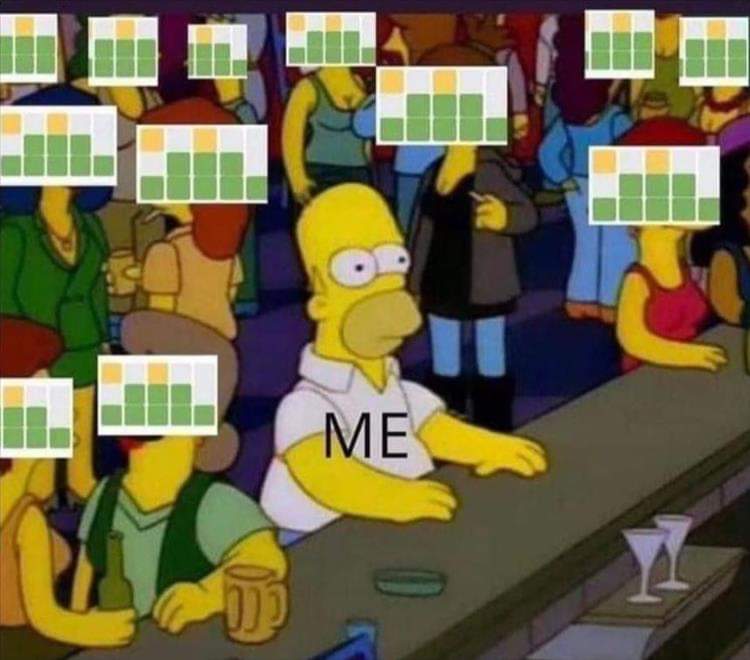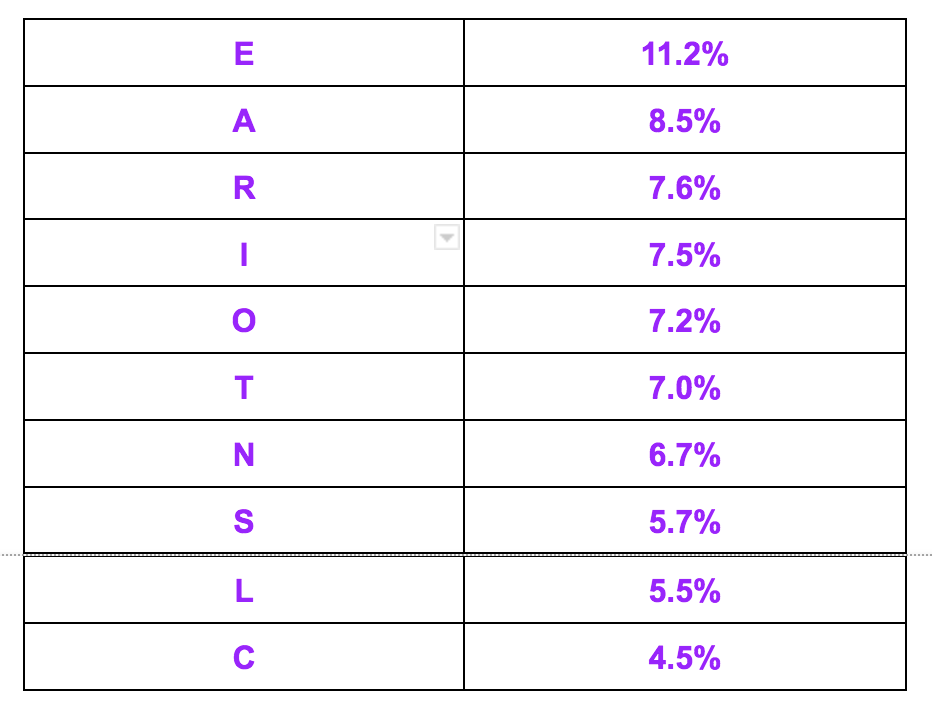Yesterday the New York Times announced that it has acquired Josh Wardle’s newest word craze, Wordle, for “7 figures”. I read that millions of people now play it daily and that it has only been in existence for a little over 3 months! Many people even routinely post their ‘Wordle prowesses and pitfalls’ on social media. Some people say it has improved their connections with others, especially during these long winter months and putting up with Covid for the second consecutive year.
And, alas, I also read that it will remain ‘free’ for the time being, which likely means it will be available behind a paywall. Well, someone’s got to pay for the NY Times’ acquisition, right?
So..my advice is: “Get it while it’s HOT!”
How Do I Play Wordle?
Well, its rules are simple enough!
- Go here to the Wordle website
- A player gets 6 attempts to guess the day’s 5-letter word; players can ‘guess’ any 5-letter word they wish.
- Once a player enters a 5-letter word, Wordle reponds using a color coded system: green indicates the letter is correct and in the correct position in the word, gold indicates the letter is in the word, but in the incorrect position, and gray indicates the letter is not in the word
- The letters already ‘selected’ are noted in the alphabet below the area allotted for the 6 attempts. This aids players to figure out their next attempts.

Although I am not addicted [yet] to Wordle like many of my language and literacy colleagues, I am intrigued by its wildfire spread and those who are addicted to this simple game.
Many believe it is a web-based version of the old game, Mastermind. I don’t agree with this at all. While both games involve using logic and strategy in order to break a ‘code’…Mastermind involves breaking a color code…Wordle involves a whole lot more since it is based upon the far more intricate orthographic code we call ‘English spelling’. Not only that, it involves some vocabulary knowledge, which is sometimes no small feat for players.
THE BIG PICTURE: The more a player knows about how the code of the English language is organized, the easier it is to break the code and deduce the ‘word’ when playing Wordle.
YES, I am sending a message to teachers, parents, and Wordle players alike:
How you learned to read and spell influences your approach to Wordle.
Let me take this a step further. Teachers who teach their students the patterns and conventions used to read and spell English words will have an easier time playing Wordle.
“Teachers who teach their students the patterns and conventions used to read and spell English words will have an easier time playing Wordle.”
–Lori Josephson
What’s the corollary here? According to Dr. Nell Duke, “Studying how to be successful with Wordle can be helpful to educators because it can remind us of some key points about effective phonics and spelling instruction.” Let me break this down for you.
High Frequency Letters—like vowels, but consonants too!
You’ve all heard this before: “Every word must have a vowel.” Well, that’s true, so when playing Wordle, be sure to include words with several vowels (such as ‘radio’ or ‘yeast’ containing 3 vowels each–and bonus, if the word starts with ‘y’ as a consonant, you’d know it right off the bat). According to the Concise Oxford English Dictionary, the vowels E, A, I, O are in the ‘Top 10’, with U and Y coming in far later on in the English frequency marathon.
Other high frequency letters, AKA those “occurring most frequently in English” would include words with R, T, N, S, L, and C!
Yup, think about those Scrabble tiles, which only have a value of 1 point. You will easily be able to figure out the letters used most frequently in English words. That is not to say that ‘Q’ (Scrabble value of 10) never appears in Wordle. I chastised myself for missing ‘query’ one day not long ago, even though I had the ‘ery’ in the correct locations.

Most Common Letter Frequencies in English according to the Concise Oxford English Dictionary
Location, Location, Location!
Upon short investigation, I discovered Lord Harold Samuel, a real estate tycoon in Britain, coined the expression: “There are three things that matter in property: location, location, location.” Of course, he was talking about commercial and residential property, but the same applies to the ‘real estate’ value of the position of letters in English words.
Let me clue you in just in case you had never thought about it. Just a few examples:
- Did you know that English words do not end in ‘v’ (names excluded). They usually have an ‘e’ following the final /v/ sound. Examples include ‘have’ or ‘involve’.
- Did you know that the combination ‘ai’ typically occurs either in the beginnings or middles of words, but are typically spelled ‘ay’ if a long /ā/ is heard at the end of a word. Examples include ‘aim’, ‘bait’, or ‘clay’.
- I bet you all realized that ‘e’ is silent at the ends of words, signaling a long vowel sound preceding it as in ‘vote’. So if a word ends in a long /ē/, it is typically spelled with either a ‘y’ or far less frequently ‘ey’ (only about 40 words in English end with an ‘ey’ as in ‘monkey’). Examples include ‘funny’ or ‘agency’
Awareness of these and other phonics patterns can’t help but provide even unconscious assistance when playing Wordle. I stumbled upon a clever teacher, Bri Luna, who created her own version of the Wordle game to reinforce the phonics patterns of various double vowels on Facebook yesterday. Excellent way to help kids to think about English orthography. Watch this:
Even though Wordle places only a single letter in each ‘box’, this teacher uses the same idea to get her students to think about the letter patterns she has been teaching her students. Notice the high level of student engagement! After all, who doesn’t like a game?
“Allowable” Spellings
English spelling–the fancy word for this is ‘orthography’–involves many different patterns. Some are based on sound (phonemes) and some are based on meaning (morphemes). Some variations are based upon the origin of the word, whether it be Anglo Saxon (more common words), Latinate (words with prefixes, suffixes, and roots/bases), Greek (multisyllable science/math words also with prefixes and suffixes). This explains why English is deemed a ‘morphophonemic’ language and why so many think English spelling is difficult or unpredictable. It is actually testimony to the fascinating brains humans have been endowed in terms of the human ability to master English spelling. Many of us are able to do this intuitively, without thinking about it, while others do better when they are taught (or have to teach) these skills directly.
Some letter patterns are “allowable”–the fancy word for this is phonotactic–such as:
TION
AR, ER, IR, OR, UR
STR
OUGH
IGN
SH, CH, TH, WH, PH, GH, RH
Other letter patterns are simply “not allowed” at all–no special word for this. These letter patterns will be (or should be if the player has mastered literacy skills including basic spelling) automatically rejected by both our brains and Wordle! Some of these include:
NROTE
CKITE
SRT
ZBAME
DIOUJ
DH, FH, HH
Skilled teachers, students, and Wordle players who are familiar with phonotactics take this “allowable spellings” approach more often than not. BRAVO to the teachers who teach their students to “look inside the words” when learning and practicing reading and spelling. Parent players who want to help their children learn and practice reading and spelling..well, this is your chance to learn together and have some fun!

Let me share how I solved yesterday’s Wordle in 3 attempts:
Yesterday’s word was a simple one: ‘those’. While Dr. Duke noted, “It doesn’t take long playing Wordle to recognize that the larger your vocabulary, the better you are likely to do”, yesterday’s word doesn’t really apply like the word ‘query’ (higher level vocabulary word) I mentioned earlier.
As you can see, I started with the word ‘crate’ because it contained 2 vowels and the other common letters ‘c’, ‘r’, and ‘t’. That led me to an ‘e’ at the end of the word, ‘t’ in a different position, and the elimination of ‘c’ and ‘r’. I looked at the remaining letters at the bottom of the picture and thought about it for a bit. I then tried ‘stole’ because ‘o’ would be the next most common vowel, and ‘s’ and ‘l’ are common consonants. That left me with ‘o’ in the correct medial position, and ‘s’ and ‘t’ in the word, but in the incorrect locations within the word. Again, I thought about it for a bit. Since I am well versed in ‘allowable’ language patterns (yes I am known as a language nerd to my family, friends, colleagues alike), I figured that ‘ose’ was a good option, which then led me to count on the trusty and well used ‘th’ digraph pattern. Voila! I easily came up with ‘those’ in far less time than it took me to write this paragraph!
In Conclusion, Let Me Share A Story and Offer Some Additional Options
So yesterday, I was speaking with one of my fellow ‘language nerd’ friends who was struck by her and her husband’s starkly different approaches to playing Wordle. She laughed and said, “He just tries to think of different 5 letter words, while I think of all the patterns I know in English to solve the wordle of the day.” I think her husband needs to read this blog post so they can continue their friendly competition more, well, competitively!
While researching for this blog, I found out about other word games as well. Did you know that Wordle is available in Spanish and that there are games like Wordle, but for words containing more letters. Read about more word games here.
Take heart, if you end up paying for a NY Times subscription to satisfy your Wordle addiction, you will also have access to several other addictive word puzzles (not to mention all the other reading material–there is even the NY Times for Kids section) to get you and your family through the winter and beyond! I gotta run since I haven’t yet had a chance to play Wordle today!!

I start with Heart every time!
D, That’s because you know the ‘rules’!!! Glad you are sharing this out. I’ll try it too! LJ
Lori, This is a very timely post! Thank you for your sharing the techniques and explaining why this stuff is intuitive even to a horrible speller and a recovering dyslexic like me. 🙂
You are MOST WELCOME!!
LJ
Thank you for post. Your article is most timely. Just so happens that I will begin tutoring a very bright, educated, ELL student in spelling. Reading is not his problem. He wishes to know the orthographic patterns of words. What materials do you recommend? Which materials best align with the Science of Reading?
Susan,
Try the Logic of English in this case….or the ABCs of English and All Their Tricks.
Lori
Susan, Love the book How To Teach Spelling as an amendment to Wilson. You could also use Wilson and emphasize Block 2 of the lesson–very short Block 1 and far longer Block 2. Sorry for the tardy response.
LJ